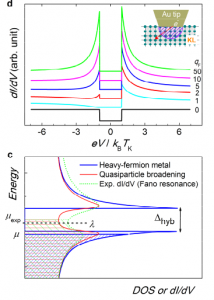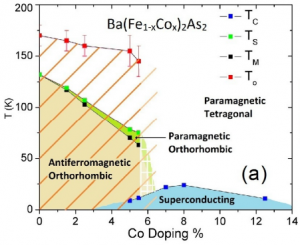Hybridization Gap in URu2Si2
 The nature of the second order phase transition that occurs in URu2Si2 at 17.5 K remains puzzling despite intensive research over the past two and half decades. A key question emerging in the field is whether a hybridization gap between the renormalized bands can be identified as the long-sought ‘hidden’ order parameter. We report on the measurement of a hybridization gap in URu2Si2 employing a spectroscopic technique based on quasiparticle scattering across a ballistic metallic junction. The differential conductance exhibits an asymmetric double-peak structure, a clear signature for a Fano resonance in a Kondo lattice. The extracted hybridization gap opens well above the transition temperature, indicating that it is not the hidden order parameter. Our results put stringent constraints on the origin of the hidden order transition in URu2Si2 and demonstrate that quasiparticle scattering spectroscopy can probe the band renormalizations in a Kondo lattice via detection of a novel type of Fano resonance. [Read More]
The nature of the second order phase transition that occurs in URu2Si2 at 17.5 K remains puzzling despite intensive research over the past two and half decades. A key question emerging in the field is whether a hybridization gap between the renormalized bands can be identified as the long-sought ‘hidden’ order parameter. We report on the measurement of a hybridization gap in URu2Si2 employing a spectroscopic technique based on quasiparticle scattering across a ballistic metallic junction. The differential conductance exhibits an asymmetric double-peak structure, a clear signature for a Fano resonance in a Kondo lattice. The extracted hybridization gap opens well above the transition temperature, indicating that it is not the hidden order parameter. Our results put stringent constraints on the origin of the hidden order transition in URu2Si2 and demonstrate that quasiparticle scattering spectroscopy can probe the band renormalizations in a Kondo lattice via detection of a novel type of Fano resonance. [Read More]
Orbital Fluctuations in the Pnictides
 We use point contact spectroscopy to probe AEFe2As2 (AE=Ca, Sr, Ba) and Fe1+yTe. For AE=Sr, Ba we detect orbital fluctuations above TS while for AE=Ca these fluctuations start below TS. Co doping preserves the orbital fluctuations while K doping suppresses it. The fluctuations are only seen at those dopings and temperatures where an in-plane resistive anisotropy is known to exist. We predict an in-plane resistive anisotropy of Fe1+yTe above TS. Our data are examined in light of the recent work by W.-C. Lee and P. Phillips (arXiv:1110.5917v1). [Read More]
We use point contact spectroscopy to probe AEFe2As2 (AE=Ca, Sr, Ba) and Fe1+yTe. For AE=Sr, Ba we detect orbital fluctuations above TS while for AE=Ca these fluctuations start below TS. Co doping preserves the orbital fluctuations while K doping suppresses it. The fluctuations are only seen at those dopings and temperatures where an in-plane resistive anisotropy is known to exist. We predict an in-plane resistive anisotropy of Fe1+yTe above TS. Our data are examined in light of the recent work by W.-C. Lee and P. Phillips (arXiv:1110.5917v1). [Read More]
